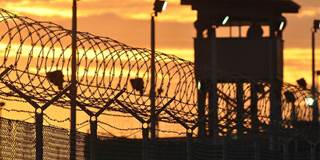The US has 5% of the world’s population and 25% of the world’s prison population – about 2.2 million people, five times as many as in 1980. The question America now faces is how to cut the onerous social, economic, and moral costs of imprisonment.
BERKELEY – The United States has 5% of the world’s population and 25% of the world’s prison population – about 2.2 million people, five times as many as in 1980. One out of every 100 American adults is incarcerated – the highest per capita rate in the world, 5-10 times higher than in Western Europe or other democracies. The social and economic toll is similarly high.
The boom in America’s prison population in recent decades is the result of ramped up punitive crime-prevention measures, including tougher drug penalties and mandatory minimum sentences, backed up by growing numbers of police and other law-enforcement officials. Beyond the financial costs of larger police forces and increased pressure on the judicial system is $60 billion a year in spending on state and federal prisons, up from $12 billion 20 years ago. And then there are the huge costs for those imprisoned (many for non-violent crimes) and for their families and communities – costs that fall disproportionately on the poor, the uneducated, African-Americans and Latinos, and the mentally ill.
Perhaps the worst part is that the expected benefits of America’s “get tough” approach have failed to materialize. Indeed, there is only a modest correlation between higher incarceration rates and lower crime rates.

BERKELEY – The United States has 5% of the world’s population and 25% of the world’s prison population – about 2.2 million people, five times as many as in 1980. One out of every 100 American adults is incarcerated – the highest per capita rate in the world, 5-10 times higher than in Western Europe or other democracies. The social and economic toll is similarly high.
The boom in America’s prison population in recent decades is the result of ramped up punitive crime-prevention measures, including tougher drug penalties and mandatory minimum sentences, backed up by growing numbers of police and other law-enforcement officials. Beyond the financial costs of larger police forces and increased pressure on the judicial system is $60 billion a year in spending on state and federal prisons, up from $12 billion 20 years ago. And then there are the huge costs for those imprisoned (many for non-violent crimes) and for their families and communities – costs that fall disproportionately on the poor, the uneducated, African-Americans and Latinos, and the mentally ill.
Perhaps the worst part is that the expected benefits of America’s “get tough” approach have failed to materialize. Indeed, there is only a modest correlation between higher incarceration rates and lower crime rates.